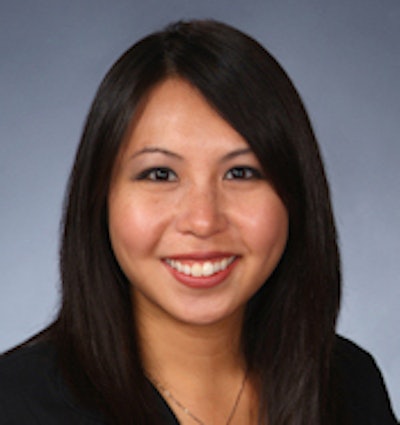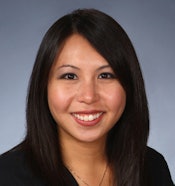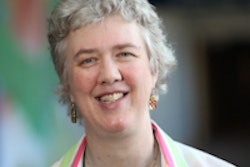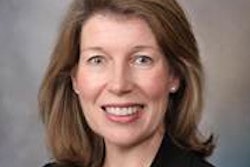
Half of California's primary care physicians are unaware of the state's breast density notification law, which suggests that the legislation has been unsuccessful in promoting discussions between women and their caregivers about breast cancer risk, according to a new study published in the Journal of the American College of Radiology.
The study findings have implications for similar density notification laws that are now being considered, including a federal version, wrote lead author Dr. Kathleen Khong, of the University of California, Davis, and colleagues.
"For [breast density notification] laws to have an impact on health practices, increased time and resources will need to be devoted to primary physician education, or institutions may need to consider alternative strategies for managing and assisting patients with issues related to breast density," the group wrote.
 Dr. Kathleen Khong from the University of California, Davis.
Dr. Kathleen Khong from the University of California, Davis.Radiologists bear the primary responsibility for complying with the law, but the legislation's intent is to educate women about density as a risk factor and to prompt further discussions with primary care providers about additional screening. If physicians aren't even aware of the law -- much less educated about breast density and cancer risk -- patients won't get the support they need, Khong told AuntMinnie.com.
"We're complying with the law in radiology, but the notifications direct women to talk with their primary care physicians," she said. "We'd like to make sure that if patients are going to their primary care physicians to discuss breast density and cancer, they're getting the information they need."
Khong and colleagues distributed a survey to 174 internal medicine, family medicine, and ob/gyn physicians in February 2014, 10 months after California's breast density notification law took effect. Seventy-seven physicians completed the survey, for a response rate of 45%. Of those physicians who responded, 39% were from internal medicine, 47% were from family medicine, and 9% were from obstetrics and gynecology. The majority had been practicing for more than a decade (JACR, December 23, 2014).
Forty-nine percent of study participants were unaware of the breast density legislation before taking the survey, and only 32% reported a change in patients' level of concern about breast density and cancer risk after the law took effect in April 2013, the researchers found. In addition, only 6% said they were "completely comfortable" responding to patients' questions about breast density.
"We didn't go into this study expecting 100% of primary care physicians to be aware of California's breast density notification law and comfortable discussing the issue of density with their patients, but the percentage of respondents who did not know about the law was higher than we thought it would be -- and this was 10 months after it had been implemented," Khong said.
What is hindering conversations about breast density between patients and their primary physicians? There are numerous factors, the authors wrote:
- Patients may not acknowledge the information about their breast tissue density in the letter mandated by the law because they are focused on the mammogram result.
- Patients who do recognize the information may not be motivated to schedule an additional appointment to discuss breast density.
- Awareness of breast tissue density and cancer risk may be hampered by factors that affect primary care in general, such as high patient volumes and shorter visits, as well as the demands of keeping up with current scientific knowledge.
"When patients do bring forward questions about breast density, the results of this survey show that many providers feel ill-equipped to fully address them," Khong and colleagues wrote. "Only roughly 30% of clinicians were completely or mostly comfortable answering breast density-related questions."
But primary care providers did express interest in further education, the researchers found. This could be provided by breast imagers in small group sessions, or through online resources such as those developed by the California Breast Density Information Group.
"Seventy-three percent of our survey participants were interested in further education about the law and about breast density," Khong said. "That's great because it means we can do something about this disconnect. In fact, it seems as if radiologists can play an important role in educating primary care physicians about mammography and breast density."
The group plans to do a follow-up study that will repeat the survey to assess whether primary care physicians' awareness of the law and their comfort level in discussing breast density and cancer risk will increase with more time, Khong said.



















